- Home
- Who We Are
- What We Do
- Industry Applications
- Circular Economy
- Media
- Information Packs
- Interesting Reads
- What is Robotic Solder Dip (Retinning, Alloy Conversion, Alloy Refresh)?
- Reballing: What Is It And When Do You Need It?
- The Quiet Deadline: How Obsolescence Shapes Modern Production
- Safeguarding the Supply Chain: How Retronix Component Services Provides Solutions for High-Reliability Industries
- Is Your Supply Chain Safe? Combatting the Threat of Counterfeit Electronic Components
- Quality
- Contact
APPLICATION SPECIFIC REBALLING
As the name suggests, when our customers have specific requirements, Retronix’s expert experience and capabilities allow us to provide innovative and unique application specific solutions.
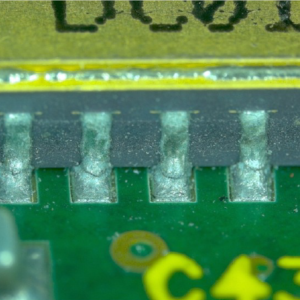
CLCC - Thermal Expansion Issues
Major differences in temperature between the CLCC body and the PCB substrate stresses the joint leading to cracks, solder is a fairly weak alloy which cannot withstand cyclic stresses easily. This leads to poor reliability and low cycles to failure.
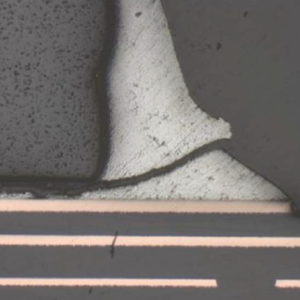
CROSS SECTION - SOLDER JOINT FRACTURE
The cross-section shows solder joint failure travelling through the bulk of solder. Note the low solder thickness under the component.
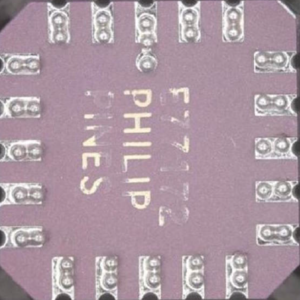
application specific solution
Solder spheres are attached to the bottom of the ceramic CLCC
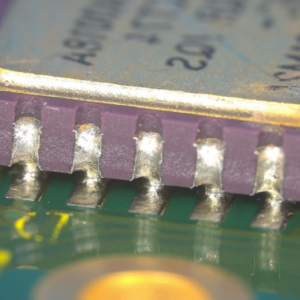
Problem solved
Balled CLCC attached to the PCB using standard solder paste print and reflow techniques. This solution solves the problem of CTE, cleaning and voids.
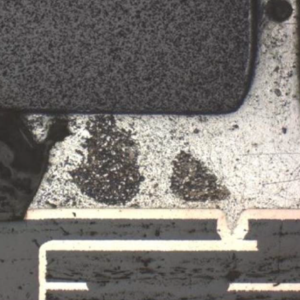
process adapted by customer as standard for all future assemblies
Cross-section of assembled, balled CLCC. Note the increase in joint thickness under the device. Dark areas are remaining HMP (High Melting Point) spheres. During assembly some of the HMP spheres dissolve into the molten tin/lead during assembly reflow.
This is what we excel at - the customer service, the unique skills and the flexibility to be able to offer a service this CUSTOMISED
© 2024
UK: Retronix, North Caldeen Rd, Coatbridge, Scotland, United Kingdom. ML5 4EF / Email: sales@retronix.com / Phone: +44 (0) 1236 433 345
USA: Retronix Global Inc, 1007 S Heatherwilde Blvd, Ste.300, Pflugerville, TX, 78660 / Email: USA@retronix.com
USA: Retronix, 10560 Dr.M.L.K Jr Street North, St.Petersburg, FL, 33716 / Email:USA@retronix.com

